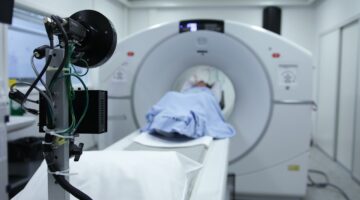
It’s been 11 years since the New York Times published its profile of Dr. Kari Nadeau’s ground-breaking clinical trials with 85 food allergy patients at Stanford University. Many of the questions posed in the article — and the research that I was grateful to be a part of and help lead — have been answered, including the critical question: can children be treated for multiple food allergies at once?
The answer, astoundingly, is yes. Today, thousands of patients, young and old, stand as proof of the life-changing effects of oral immunotherapy (OIT) and drugs such as Xolair (which was approved by the FDA this year for the treatment of food allergies). Where food allergy families once faced a lifetime of anxious avoidance of their allergens, they now have options to live a more normal, more-relaxed life.
The timing couldn’t be better. Food allergies are more common than ever among both children and adults. Anywhere food is served including schools, restaurants, and airplanes, can pose a risk for accidental exposure to foods that may cause severe reactions. The official list of major allergens is growing, too; sesame was recognized as a major allergen by the FDA in 2023.
Against this backdrop, new approaches to all aspects of food allergy care, from testing to treatment, are racing to keep up with the demand. Multiple new forms of epinephrine — the only proven drug to halt anaphylaxis — are in development, including an epinephrine nasal spray that could be approved by the FDA as soon as this year. Other possible forms of immunotherapy are under development, such as Viaskin’s epicutaneous immunotherapy patch and Alladapt Immunotherapeutics’ drug candidate for multi-food allergy — all building off of the findings and successes of the last decade of research and clinical care.
Plenty of misinformation still exists. Many confuse food allergies for sensitivities. While tragic deaths caused by food allergies are well-publicized, they are also relatively rare. Necessary food labeling is often poor or altogether absent. Public education campaigns around food allergies are practically nonexistent compared to other common medical conditions. As a result, many food allergy families are unaware or misinformed about the causes of and solutions to this chronic condition that impacts their daily lives.
What is the state of food allergy care in 2024?
- Oral immunotherapy: life-changing, but misperceptions persist
Oral immunotherapy (OIT) is a food allergy treatment that helps desensitize patients to their allergens by giving them small amounts of the allergen on a regular basis, building up the body’s tolerance to those foods. The amount of food, usually ingested daily, is gradually increased over time, with the goal of desensitizing the body to larger quantities, protecting against severe reactions to accidental exposures, and increasing quality of life. Over time, OIT retrains the immune system to decrease adverse reactions to the specific allergen.
Allergen-specific immunotherapy has existed in various forms for more than a century. Its oral application for food allergies only began to evolve into common practice about 12 years ago. Because of this rapid, recent evolution, some people who could most benefit from treatment with OIT remain skeptical or unaware that treatment options even exist.
Though it can sound challenging or even scary, particularly for patients who have experienced severe allergic reactions in the past, OIT is both safe and effective in treating food allergies — even multiple allergies at the same time — when conducted under the guidance of a trained clinician. The goal of OIT isn’t necessarily to “cure” the food allergy but rather to bring patients into a “maintenance phase” of treatment. Once the patient’s immune system reaches a safe desensitization point, a clinician can work with the patient to continue OIT in long-term maintenance using foods that are easily purchased at a grocery store.
Since 2013, Dr. Nadeau’s initial group of clinical trial participants has aged into young adulthood. Many of them are now independent college students and even world travelers. The long-term impact of their early clinical trials is a testament to the power of OIT to allow patients to live their lives free from worry and fear with regular maintenance dosing.
- Xolair: FDA approved for food allergies
The ground-breaking trials at Stanford also utilized the biologic Xolair (omalizumab) in tandem with OIT. Originally approved in 2003 for the treatment of moderate to severe persistent allergic asthma, Xolair is an anti-IgE monoclonal antibody developed by Genentech and Novartis that inhibits the allergic reaction process. Earlier this year, the FDA approved Xolair for the reduction of food allergic reactions.
Clinical trials demonstrated the power of Xolair in patients as young as 1 to increase the threshold for triggering multiple food allergies. This means that Xolair can help make food allergic patients safer in classrooms, restaurants, and many other settings where there is a risk of cross-contamination or accidental exposure.
While the FDA approval is currently limited to Xolair as a monotherapy, research has shown the potential for food allergy patients who begin OIT with Xolair may benefit from increased safety and long-lasting immunological changes.
- On the horizon
More food allergy clinical trials are underway. Several ongoing clinical trials are investigating the use of Dupixent (dupilumab) for food allergy treatment, including one investigating the combined use of both Xolair and Dupixent to improve outcomes for OIT to multiple foods.
FARE (Food Allergy Research & Education) offers a national clinical trial finder on its website. Additional therapies under development include Epicutaneous Immunotherapy (EPIT), Sublingual Immunotherapy (SLIT), Toothpaste for the treatment of peanut allergens, and food allergy vaccines. Research and development, in conjunction with clinical care facilities for food allergy patients, will continue to make more treatment options available for more people in the future.
The promise of these and other food allergy treatments is immense. Considering the leaps and bounds of progress the last decade has brought to food allergy families, the next decade holds the potential to increase awareness and availability of existing therapies and introduce new therapy options for adults and children alike.
Photo: invincible_bulldog, Getty Images
Tina L.R. Dominguez, PA-C, MMS is a food allergy specialist and the East Bay Clinical Director at Latitude Food Allergy Care clinic in San Ramon, CA. She has more than 25 years of experience in medicine and is one of the founding clinicians of the Sean N. Parker Center for Allergy & Asthma Research at Stanford University.
This post appears through the MedCity Influencers program. Anyone can publish their perspective on business and innovation in healthcare on MedCity News through MedCity Influencers. Click here to find out how.











